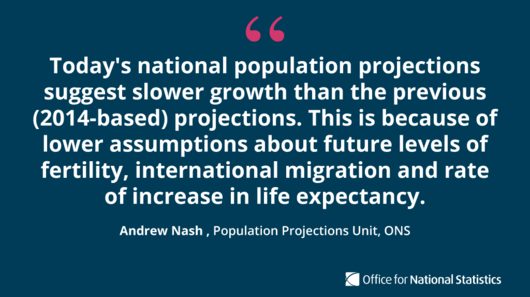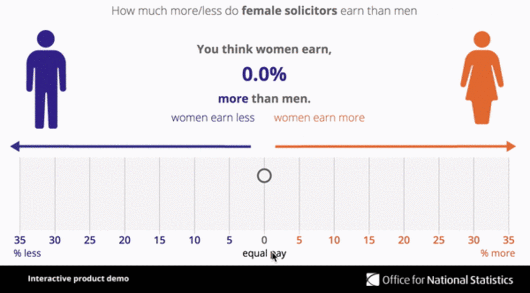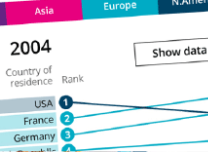| Annual Survey of Hours and Earnings in the UK: provisional 2017 and revised 2016 In April 2017, median gross weekly earnings for full-time employees in the UK were £550, up 2.2% from £539 in 2016. The 2.2% growth seen this year is the joint highest since the economic downturn in 2008 (matching that seen in 2013 and 2016). Similarly the median gross weekly earnings for part-time employees also increased, from £177 in 2016 to £182 in 2017 (2.9%). Adjusted for inflation, full-time workers' weekly earnings decreased by 0.4% compared with 2016. This is the first time since 2014 that there has been a fall in this measure and reflects a higher level of inflation in April 2017 (2.6%) compared with recent years, for example, in April 2016 inflation was 0.7%. People, population and community National population projections: 2016-based
The UK population is projected to increase by 3.6 million (5.5%) over the next 10 years, from an estimated 65.6 million in mid-2016 to 69.2 million in mid-2026.
England is projected to grow more quickly than the other UK nations: 5.9% between mid-2016 and mid-2026, compared with 4.2% for Northern Ireland, 3.2% for Scotland and 3.1% for Wales.
Over the next 10 years, 46% of UK population growth is projected to result from more births than deaths, with 54% resulting from net international migration. Andrew Nash from our Population Projections Unit comments on the latest statistics out today:  Small area population estimates in England and Wales: mid-2016
In mid-2016, there were 34,753 lower layer Super Output Areas (LSOAs) in England and Wales with a mean population of 1,680 and 7,201 middle layer Super Output Areas (MSOAs) with a mean population of 8,107; the LSOA with the highest median age in mid-2016 was Eastbourne 012B at 70.6 years, whereas Salford 016E had the lowest median age at 15.1 years.
There were 207 clinical commissioning groups (CCGs) in England with a mean population size of 266,995 in mid-2016; the CCG with the largest proportion of the population aged 65 or over was NHS North Norfolk at 29.2% and the CCG with the largest proportion of the population aged 0 to 15 was NHS Bradford City at 27.9%. On average women earn 9.1% less than men, however there are still vast differences depending on occupation. Test your knowledge on the pay gap with our quiz and explore a wide range of jobs with our explorer.  Is the gender pay gap closing? Some of the widest gender pay gaps are in financial occupations, but which jobs have the narrowest pay gap? Find our using our interactive explorer and see how the pay gap for your job compares.  | 













No comments:
Post a Comment